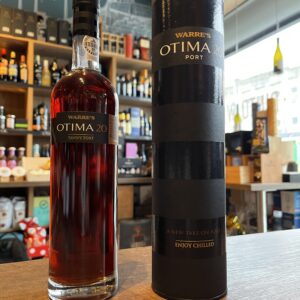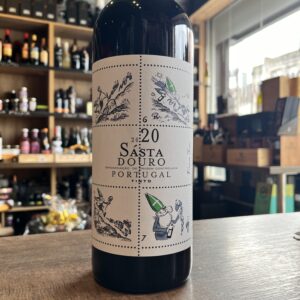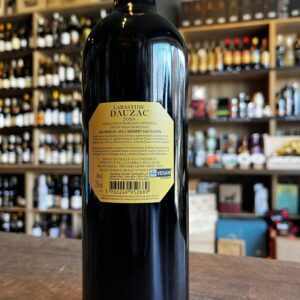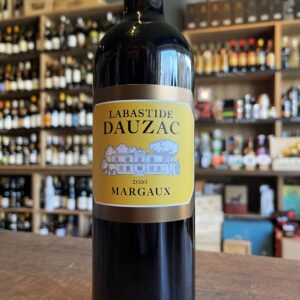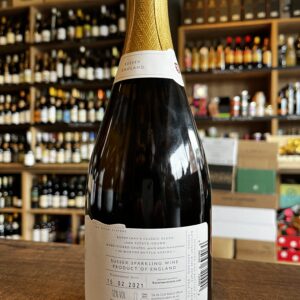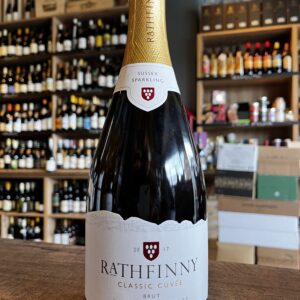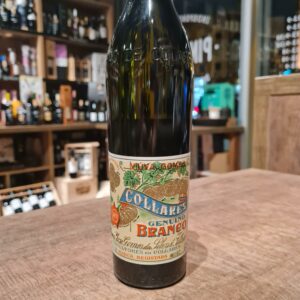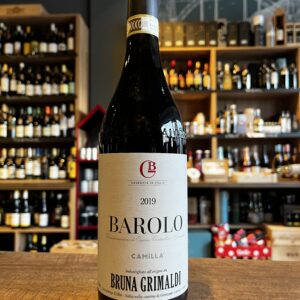-

 Pinot Noir Indulge in the elegance of Pinot Noir selection, where each bottle encapsulates the delicate balance of red fruit nuances and refined complexity. Schug Winery was born from Walter Schug’s passion for Pinot Noir, a journey that led him from Napa Valley’s pioneering days at Joseph Phelps Winery to the wind-swept hills of Sonoma’s Carneros region. Honoring our 100-year-old heritage and guided by winemaker Johannes Scheid, we continue to craft European-styled wines for a new chapter, inviting you to share our family’s legacy in every sip.
Pinot Noir Indulge in the elegance of Pinot Noir selection, where each bottle encapsulates the delicate balance of red fruit nuances and refined complexity. Schug Winery was born from Walter Schug’s passion for Pinot Noir, a journey that led him from Napa Valley’s pioneering days at Joseph Phelps Winery to the wind-swept hills of Sonoma’s Carneros region. Honoring our 100-year-old heritage and guided by winemaker Johannes Scheid, we continue to craft European-styled wines for a new chapter, inviting you to share our family’s legacy in every sip. -
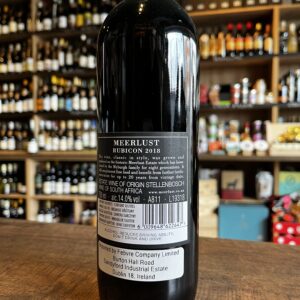
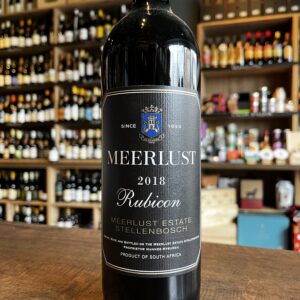 Meerlust Rubicon had a great impact on the history of South African wine. First made in 1980, it essentially set the pattern for Bordeaux blends in the country. There was of course a few pioners at this front that only used Cabernet Sauvignon varietal such as Kanonkop (Paul Sauer) in 1973 but as a blend as per Bordeaux style Meerlust changed the scene. According to Hannes Myburgh, his father was inspired by Julious Cesar words “Alea iacta est. The die is cast,” leading his troops towards Rome in 49BC. As this was a irreversable moment in history as there was no turning back after crossing the Rubicon river as this profoundly shifted Roman politics. Nico Myburgh from the 7th generation of the Meerlust estate and father of the current custodian, was holidaying in Bordeaux when he discovered that the terroir in this area of France was similar to that of the Eerste River Valley. Both have a distinctive climate, characterised by a cooling sea breeze. And both have a soil structure made up of decomposed granite and clay. The red wines produced by the two regions, however, were very different. Unlike the Western Cape’s specified cultivars, Bordeaux thrived on producing blends. Nico returned to Meerlust, filled with inspiration and the desire to create a blend of his own that would match those of the French. In 1980, after several years of experimentation together with winemaker Giorgio Dalla Cia, he announced the birth of the new blend. With proportions of 70% Cabernet Sauvignon, 20% Merlot and 10% Cabernet Franc, a new style of wine had been created in South Africa. Like Caesar, there could be no turning back. Nico and Giorgio had already considered a number of names for the new blend when Professor Dirk Opperman from the University of Stellenbosch, a friend of Nico’s suggested that “Rubicon” might be appropriate. The pair had, after all, crossed a new frontier – and changed the way South Africans thought about red wine. The Cabernet Sauvignon, Merlot, Cabernet Franc and Petit Verdot vineyards are hand harvested from February through to March and each individual vineyard block is kept separate throughout the fermentation process and monitored until the moment of blending.In wintertime, after malolactic fermentation has allowed the personality of each vineyard to assert itself in barrel, the wines are carefully assessed to produce the most expressive, harmonious and complex wine. The blend is assembled and then allowed another year in barrel for the components to harmonise. The wine is finally bottled and left for a further 2 years before release. Rubicon is always released at four years of age and will immediately offer the distinctive character and quality of the Estate. However, further bottle maturation is advised for the intriguing complexity of this classic wine to unfold and reveal itself.The first vintage, the 1980, remains vivacious and very much alive, even 30+ years after vintage. Subsequent vintages all express the personality and characteristics of their specific year. All vintages of Rubicon, however, share the hallmarks of wines grown at this special place: intensity, harmony, vibrancy, complexity and individuality.I suppose we could use here ''Veni, vidi, vici''
Meerlust Rubicon had a great impact on the history of South African wine. First made in 1980, it essentially set the pattern for Bordeaux blends in the country. There was of course a few pioners at this front that only used Cabernet Sauvignon varietal such as Kanonkop (Paul Sauer) in 1973 but as a blend as per Bordeaux style Meerlust changed the scene. According to Hannes Myburgh, his father was inspired by Julious Cesar words “Alea iacta est. The die is cast,” leading his troops towards Rome in 49BC. As this was a irreversable moment in history as there was no turning back after crossing the Rubicon river as this profoundly shifted Roman politics. Nico Myburgh from the 7th generation of the Meerlust estate and father of the current custodian, was holidaying in Bordeaux when he discovered that the terroir in this area of France was similar to that of the Eerste River Valley. Both have a distinctive climate, characterised by a cooling sea breeze. And both have a soil structure made up of decomposed granite and clay. The red wines produced by the two regions, however, were very different. Unlike the Western Cape’s specified cultivars, Bordeaux thrived on producing blends. Nico returned to Meerlust, filled with inspiration and the desire to create a blend of his own that would match those of the French. In 1980, after several years of experimentation together with winemaker Giorgio Dalla Cia, he announced the birth of the new blend. With proportions of 70% Cabernet Sauvignon, 20% Merlot and 10% Cabernet Franc, a new style of wine had been created in South Africa. Like Caesar, there could be no turning back. Nico and Giorgio had already considered a number of names for the new blend when Professor Dirk Opperman from the University of Stellenbosch, a friend of Nico’s suggested that “Rubicon” might be appropriate. The pair had, after all, crossed a new frontier – and changed the way South Africans thought about red wine. The Cabernet Sauvignon, Merlot, Cabernet Franc and Petit Verdot vineyards are hand harvested from February through to March and each individual vineyard block is kept separate throughout the fermentation process and monitored until the moment of blending.In wintertime, after malolactic fermentation has allowed the personality of each vineyard to assert itself in barrel, the wines are carefully assessed to produce the most expressive, harmonious and complex wine. The blend is assembled and then allowed another year in barrel for the components to harmonise. The wine is finally bottled and left for a further 2 years before release. Rubicon is always released at four years of age and will immediately offer the distinctive character and quality of the Estate. However, further bottle maturation is advised for the intriguing complexity of this classic wine to unfold and reveal itself.The first vintage, the 1980, remains vivacious and very much alive, even 30+ years after vintage. Subsequent vintages all express the personality and characteristics of their specific year. All vintages of Rubicon, however, share the hallmarks of wines grown at this special place: intensity, harmony, vibrancy, complexity and individuality.I suppose we could use here ''Veni, vidi, vici'' -
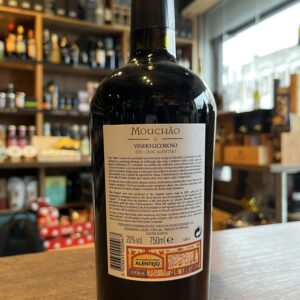
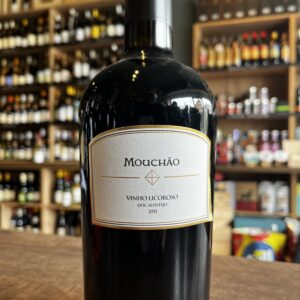 This fortified wine has been produced in Mouchão since the winery was built in 1901. The best grapes from Alicante Bouschet were harvested by hand and trodden by foot in traditional stone presses. The grapes are gently macerated until the fermentation process begins in order to develop a round, subtle and soft mouthfeel. After 120 years, this fortified dessert wine continues to be essential in the homes of Alentejo families at Christmas time. Sold and consumed young, mainly at the beginning of December of the same year of production. Nowadays its popularity is growing outside the festive season and is served in restaurants, very cold after meals. A very traditional and forming part of the tradition of the Northeast Alentejo.
This fortified wine has been produced in Mouchão since the winery was built in 1901. The best grapes from Alicante Bouschet were harvested by hand and trodden by foot in traditional stone presses. The grapes are gently macerated until the fermentation process begins in order to develop a round, subtle and soft mouthfeel. After 120 years, this fortified dessert wine continues to be essential in the homes of Alentejo families at Christmas time. Sold and consumed young, mainly at the beginning of December of the same year of production. Nowadays its popularity is growing outside the festive season and is served in restaurants, very cold after meals. A very traditional and forming part of the tradition of the Northeast Alentejo. -
Out of stock
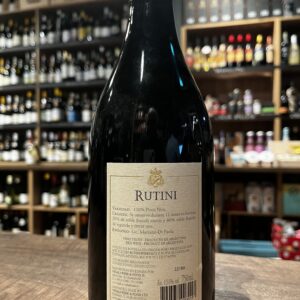
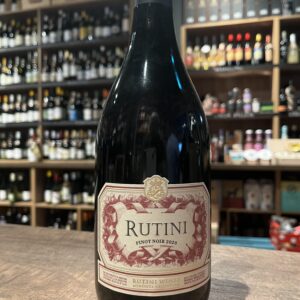 From the start, Felipe Rutini was guided by the motto “Labor and perseverance.” This attitude shaped the development of his wines, which became synonymous with superlative quality. Following his innovative spirit, in 1925 the winery began to plant vines in the Uco Valley. Uco Valley vineyards comprise over 400 hectares at an altitude of between 1,050 and 1,200 meters above sea level. An additional 120 hectares of fields that are currently being planted with vines will expand the winery’s possibilities for producing unique wines that are carefully tended to and nurtured from the very beginning. Very promising wines that need that leap of faith due to price. I suppose Mariano Di Paola being within the best 30 best winemakers in the world may have something to do with it... We do recomend it, just not everyday!
From the start, Felipe Rutini was guided by the motto “Labor and perseverance.” This attitude shaped the development of his wines, which became synonymous with superlative quality. Following his innovative spirit, in 1925 the winery began to plant vines in the Uco Valley. Uco Valley vineyards comprise over 400 hectares at an altitude of between 1,050 and 1,200 meters above sea level. An additional 120 hectares of fields that are currently being planted with vines will expand the winery’s possibilities for producing unique wines that are carefully tended to and nurtured from the very beginning. Very promising wines that need that leap of faith due to price. I suppose Mariano Di Paola being within the best 30 best winemakers in the world may have something to do with it... We do recomend it, just not everyday! -
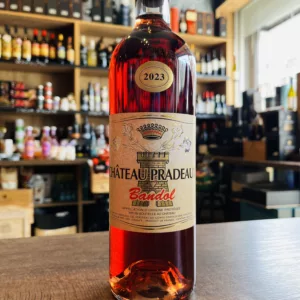 There is the appellation of Bandol with its plethora of producers, some good, some mediocre; and then there is Château Pradeaux, the unique, inimitable, standard-bearer for this ancient wine-growing district. The Château Pradeaux is situated on the outskirts of the town of Saint Cyr-sur-Mer that lies directly on the Mediterranean Ocean between Toulon and Marseilles. The estate has been in the hands of the Portalis family since before the French Revolution. The vineyards are cultivated in as natural a manner as possible with reliance on organic methods.
There is the appellation of Bandol with its plethora of producers, some good, some mediocre; and then there is Château Pradeaux, the unique, inimitable, standard-bearer for this ancient wine-growing district. The Château Pradeaux is situated on the outskirts of the town of Saint Cyr-sur-Mer that lies directly on the Mediterranean Ocean between Toulon and Marseilles. The estate has been in the hands of the Portalis family since before the French Revolution. The vineyards are cultivated in as natural a manner as possible with reliance on organic methods. -
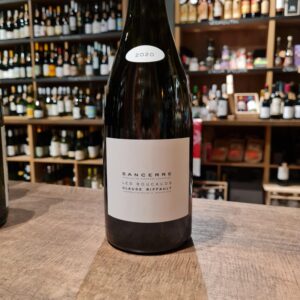 At barely 30 years old, Stephane Riffault (Claude’s son and now owner of the estate) is turning out Sancerre bottlings that are the envy of many producers twice his age. As David Schildknecht put it, “make no mistake: this address in the hamlet of Maison Salle (Sury-en-Vaux) is now one of the five or six most exciting estates in the Sancerre appellation.” Given that Stephane’s holdings represent 4 tenths of 1 percent of the appellation, this kid is clearly doing something right. Based in the village of Sury-en-Vaux, the domaine works 33 different parcels in 6 different lieu-dits spread across 4 villages. The 13.5 hectares of vines are plowed and no synthetic material is used. Unlike most Sancerre producers, the entire harvest is carried out by hand and an extensive sorting takes place before the grapes are crushed. Stephane’s wife, Benedicte, leads the harvest team while Stephane manages the sorting and press during harvest. Most of the domaine’s holdings are planted on the soft limestone soil called Terres Blanches with some parcels on calliottes and silex. Small, judicious uses of oak help to add length to the already precise and vertical bottling. All of the parcels are vilified separately and with the exception of the rose, all the wines are bottled unfiltered. Having studied and worked in Burgundy (and closely with Olivier Leflaive), it’s easy to see the Burgundian influence in Stephane’s wines. The mastery of minerality standing shoulder-height with the wood is rarely duplicated in Sancerre. Regardless of the exposition of his parcels (many are south-facing), Riffault’s wines are always crisp and high-cut with a jeweled sort of delineation that speaks to the precision and attention these wines get. These are not your daddy’s (or his daddy’s) Sancerres.
At barely 30 years old, Stephane Riffault (Claude’s son and now owner of the estate) is turning out Sancerre bottlings that are the envy of many producers twice his age. As David Schildknecht put it, “make no mistake: this address in the hamlet of Maison Salle (Sury-en-Vaux) is now one of the five or six most exciting estates in the Sancerre appellation.” Given that Stephane’s holdings represent 4 tenths of 1 percent of the appellation, this kid is clearly doing something right. Based in the village of Sury-en-Vaux, the domaine works 33 different parcels in 6 different lieu-dits spread across 4 villages. The 13.5 hectares of vines are plowed and no synthetic material is used. Unlike most Sancerre producers, the entire harvest is carried out by hand and an extensive sorting takes place before the grapes are crushed. Stephane’s wife, Benedicte, leads the harvest team while Stephane manages the sorting and press during harvest. Most of the domaine’s holdings are planted on the soft limestone soil called Terres Blanches with some parcels on calliottes and silex. Small, judicious uses of oak help to add length to the already precise and vertical bottling. All of the parcels are vilified separately and with the exception of the rose, all the wines are bottled unfiltered. Having studied and worked in Burgundy (and closely with Olivier Leflaive), it’s easy to see the Burgundian influence in Stephane’s wines. The mastery of minerality standing shoulder-height with the wood is rarely duplicated in Sancerre. Regardless of the exposition of his parcels (many are south-facing), Riffault’s wines are always crisp and high-cut with a jeweled sort of delineation that speaks to the precision and attention these wines get. These are not your daddy’s (or his daddy’s) Sancerres. -
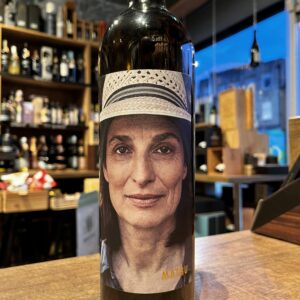 Toro was one of the great discoveries on our trips in the search for vineyards. In 2005 we found ourselves among the largest number of centenary and pre-phylloxera vineyards we had ever seen, with sandy soils perfect for the vine and an ideal continental climate to prevent the onset of diseases. All these conditions have led to the maintenance of ancestral viticulture, based on respect for natural rhythms. But, without a doubt, the most unique thing we found in Toro were its wine growers, men and women with an emotional attachment to the land, to which they have dedicated effort, wisdom, respect and sacrifice for generations. That is why they are the face of the wines of Bodega Matsu, a Japanese word that means “wait” and conveys the philosophy of this project. Wait for nature to take its course, for the vineyards to turn 100, wait for the perfect moment to open a bottle of wine. With El Pícaro, El Recio, El Viejo and La Jefa our aim was to elaborate wines that retain the traditional power of the Toro vineyards, but combine it with the freshness and elegance that characterizes all our wines.
Toro was one of the great discoveries on our trips in the search for vineyards. In 2005 we found ourselves among the largest number of centenary and pre-phylloxera vineyards we had ever seen, with sandy soils perfect for the vine and an ideal continental climate to prevent the onset of diseases. All these conditions have led to the maintenance of ancestral viticulture, based on respect for natural rhythms. But, without a doubt, the most unique thing we found in Toro were its wine growers, men and women with an emotional attachment to the land, to which they have dedicated effort, wisdom, respect and sacrifice for generations. That is why they are the face of the wines of Bodega Matsu, a Japanese word that means “wait” and conveys the philosophy of this project. Wait for nature to take its course, for the vineyards to turn 100, wait for the perfect moment to open a bottle of wine. With El Pícaro, El Recio, El Viejo and La Jefa our aim was to elaborate wines that retain the traditional power of the Toro vineyards, but combine it with the freshness and elegance that characterizes all our wines. -
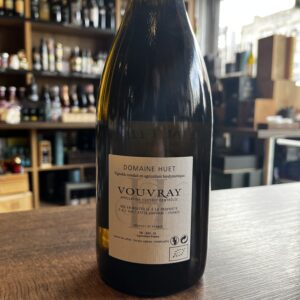
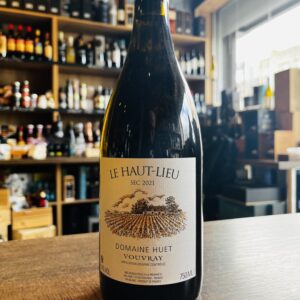 Pure, energetic and highly refined, Domaine Huet Vouvray Le Haut Lieu Sec is a fabulous Vouvray that any chenin lover should try. However, thanks to its mineral soils and the biodynamic care given to the fruit, it is certain that this wine still has a lot to give. Once you have it in your hands, age it, if you can…
Pure, energetic and highly refined, Domaine Huet Vouvray Le Haut Lieu Sec is a fabulous Vouvray that any chenin lover should try. However, thanks to its mineral soils and the biodynamic care given to the fruit, it is certain that this wine still has a lot to give. Once you have it in your hands, age it, if you can… -
 Herdade dos Grous -Alentejo, Portugal’s largest province holds the traditional Portuguese charm and a Moorish heritage, which can be seen in all its architecture. Its continental climate with Mediterranean influences, offers ideal conditions for the production of fantastic wines and extremely high quality regional products.
Herdade dos Grous -Alentejo, Portugal’s largest province holds the traditional Portuguese charm and a Moorish heritage, which can be seen in all its architecture. Its continental climate with Mediterranean influences, offers ideal conditions for the production of fantastic wines and extremely high quality regional products. -
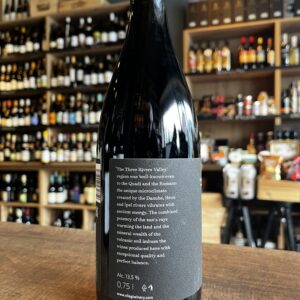
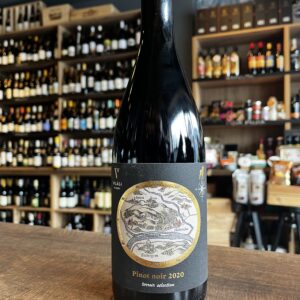 Organically cultivated Pinot Noir on a mineral rich volcanic bedrock in the Three Rivers Valley. Old world mineral freshness is paired with ripe flavour intensity that of New World Pinot Noirs. Fermented and aged in 2nd fill 500l Hungarian barrels for 24months.Forest fruits, juicy ripe cherries, well integrated silky oak tannins. Tastes luxurious.
Organically cultivated Pinot Noir on a mineral rich volcanic bedrock in the Three Rivers Valley. Old world mineral freshness is paired with ripe flavour intensity that of New World Pinot Noirs. Fermented and aged in 2nd fill 500l Hungarian barrels for 24months.Forest fruits, juicy ripe cherries, well integrated silky oak tannins. Tastes luxurious. -
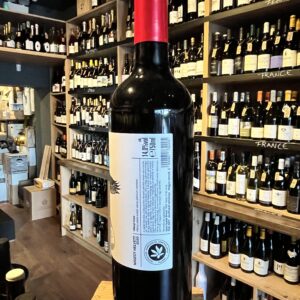
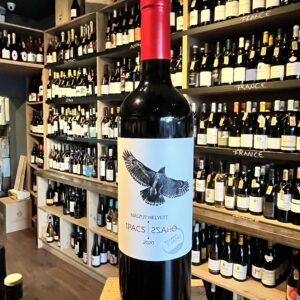 To the joy of Ipacs family, he used the money put aside for the honeymoon to buy his vineyard. He ‘had to’, it was love at first sight, the world expands for me here and everything just fits into these barely two hectares. This little estate has been the constantly renewing symbol of togetherness, challenge, and happiness for the couple. It is clear that cabernet franc has found its home in Villány, and is the key to its future. According to the Villány appellation control system, “Villányi Franc” appellation is a carefully selected 100% cabernet franc – the flagship brand of the wine region. Villányi Franc is the embodiment of elegance, style and harmony. Not overwhelming, but uplifting. Let it time to open, taste it from a large glass.
To the joy of Ipacs family, he used the money put aside for the honeymoon to buy his vineyard. He ‘had to’, it was love at first sight, the world expands for me here and everything just fits into these barely two hectares. This little estate has been the constantly renewing symbol of togetherness, challenge, and happiness for the couple. It is clear that cabernet franc has found its home in Villány, and is the key to its future. According to the Villány appellation control system, “Villányi Franc” appellation is a carefully selected 100% cabernet franc – the flagship brand of the wine region. Villányi Franc is the embodiment of elegance, style and harmony. Not overwhelming, but uplifting. Let it time to open, taste it from a large glass. -
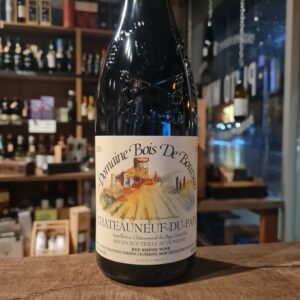 Domaine Bois de Boursan makes exemplary Châteauneuf-du-Pape in the Southern Rhône. This family-run estate was started by the Versino family in 1955, who moved across from Piedmont in Italy. It is now in the hands of Jean-Paul, the third generation at the helm. He takes great pride in continuing to make traditionally-styled reds with the belief that vinifying with stems and ageing the wine for extended periods in large oak foudres gives his wine its unique character. There is nothing flashy or opulent here, just wines with great character. In total, Jean-Paul has 10 hectares spread across 27 different parcels in Châteauneuf-du-Pape, with its changing soil types and vines up to 50 years old.
Domaine Bois de Boursan makes exemplary Châteauneuf-du-Pape in the Southern Rhône. This family-run estate was started by the Versino family in 1955, who moved across from Piedmont in Italy. It is now in the hands of Jean-Paul, the third generation at the helm. He takes great pride in continuing to make traditionally-styled reds with the belief that vinifying with stems and ageing the wine for extended periods in large oak foudres gives his wine its unique character. There is nothing flashy or opulent here, just wines with great character. In total, Jean-Paul has 10 hectares spread across 27 different parcels in Châteauneuf-du-Pape, with its changing soil types and vines up to 50 years old. -
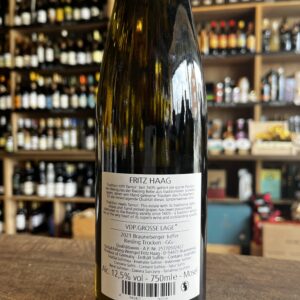
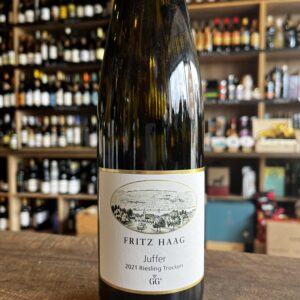 The historic Fritz Haag wine estate is located in the heart of the central Mosel River Valley. The earliest documentation of the estate dates back to 1605. At that time, the village in which it is situated was known as “Dusemond.” In 1925, this village was renamed “Brauneberg” (“brown mountain,” a reference to the color of the slate soil in this area of the Mosel) in an endeavor to further promote the reputation of its world-renowned vineyards “Brauneberger Juffer” and “Brauneberger Juffer Sonnenuhr.” Like all the top Mosel producers, Fritz Haag produces a range of wines including some very rich, late harvest dessert wines. These wines put the region on the map for luxury wine in the 17 and 1800s, making some Mosel Riesling more pricey and coveted than first growth Bordeaux. But in truth the wines that the locals drank, especially in the summer, were generally off dry to completely bone dry. Fritz Haag's vineyards sit along the slopes of the Brauneberger hill and the vineyards of Juffer and Juffer Sonnenuhr. Brauneberger faces almost entirely south which makes it a bit easier to get fully ripe Riesling in the classically cold, wet Mosel. That has changed a bit recently of course, but this is still a prized site for wines that perfectly balance finesse and power, complexity and airy drinkability. This specific wine is a VDP GG or Grosse Lage which is equivalent to a Grand Cru.
The historic Fritz Haag wine estate is located in the heart of the central Mosel River Valley. The earliest documentation of the estate dates back to 1605. At that time, the village in which it is situated was known as “Dusemond.” In 1925, this village was renamed “Brauneberg” (“brown mountain,” a reference to the color of the slate soil in this area of the Mosel) in an endeavor to further promote the reputation of its world-renowned vineyards “Brauneberger Juffer” and “Brauneberger Juffer Sonnenuhr.” Like all the top Mosel producers, Fritz Haag produces a range of wines including some very rich, late harvest dessert wines. These wines put the region on the map for luxury wine in the 17 and 1800s, making some Mosel Riesling more pricey and coveted than first growth Bordeaux. But in truth the wines that the locals drank, especially in the summer, were generally off dry to completely bone dry. Fritz Haag's vineyards sit along the slopes of the Brauneberger hill and the vineyards of Juffer and Juffer Sonnenuhr. Brauneberger faces almost entirely south which makes it a bit easier to get fully ripe Riesling in the classically cold, wet Mosel. That has changed a bit recently of course, but this is still a prized site for wines that perfectly balance finesse and power, complexity and airy drinkability. This specific wine is a VDP GG or Grosse Lage which is equivalent to a Grand Cru. -
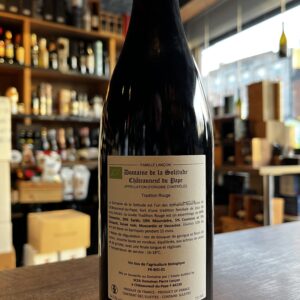
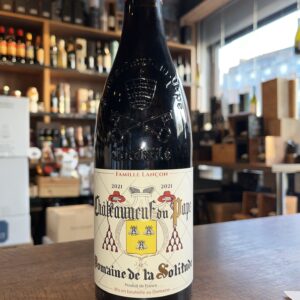 This domain has one of the best terroirs in Châteauneuf-du-Pape with its abundance of rounded quartzite stones from the Villafranchian period. These stones absorb heat during the day then radiate it at night, promoting full grape maturity. Yielding just 30 hectolitres per hectare, the vines are carefully managed throughout the year. The grapes are hand-harvested, once each variety has reached full maturity, which is based on tastings undertaken by an expert panel. The vineyard is farmed sustainably according to the principles of la lutte raisonnée.
This domain has one of the best terroirs in Châteauneuf-du-Pape with its abundance of rounded quartzite stones from the Villafranchian period. These stones absorb heat during the day then radiate it at night, promoting full grape maturity. Yielding just 30 hectolitres per hectare, the vines are carefully managed throughout the year. The grapes are hand-harvested, once each variety has reached full maturity, which is based on tastings undertaken by an expert panel. The vineyard is farmed sustainably according to the principles of la lutte raisonnée.Technical sheet
-

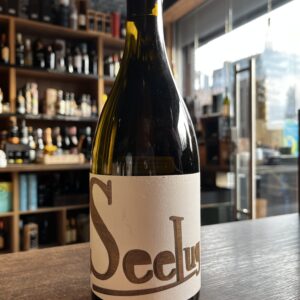 Seelug 2022 - the first vintage of something special. First things first though - some relevant terminologies: Off-shore wind - air movement off-the-shore, into-the-ocean. On-shore wind - air movement from-the-ocean, onto-the-shore. Chop/wit pertjies/white horses - Little waves produced by long distance air movement over large expanses of open ocean surfaces. Sampling - The picking of random grape berries from a vineyard in order to get a representable sample to determine ripeness. Seelug - Sea Air.
Seelug 2022 - the first vintage of something special. First things first though - some relevant terminologies: Off-shore wind - air movement off-the-shore, into-the-ocean. On-shore wind - air movement from-the-ocean, onto-the-shore. Chop/wit pertjies/white horses - Little waves produced by long distance air movement over large expanses of open ocean surfaces. Sampling - The picking of random grape berries from a vineyard in order to get a representable sample to determine ripeness. Seelug - Sea Air. -

 Róisín Curley is an impressive winemaker that teaches us all a good lesson on the definition of ''busy lifes''. Winemaker, Pharmacist, Micro-negotiant and a Master of Wine....Whats next? Astronaut? More to the point here, Roisin doesnt do things half way either, all of her wines are stunning, a pleasure to uncork and savor. This aligote Dore is a great example. Going up against the allmighty Chardonnay in Burgundy, doesnt stay behind and does exactly what Roisin sets it for. Elegant yet robust, Mineral, food acidity to a perfect level and a lenght that keeps reminding you that there is more to come
Róisín Curley is an impressive winemaker that teaches us all a good lesson on the definition of ''busy lifes''. Winemaker, Pharmacist, Micro-negotiant and a Master of Wine....Whats next? Astronaut? More to the point here, Roisin doesnt do things half way either, all of her wines are stunning, a pleasure to uncork and savor. This aligote Dore is a great example. Going up against the allmighty Chardonnay in Burgundy, doesnt stay behind and does exactly what Roisin sets it for. Elegant yet robust, Mineral, food acidity to a perfect level and a lenght that keeps reminding you that there is more to come


